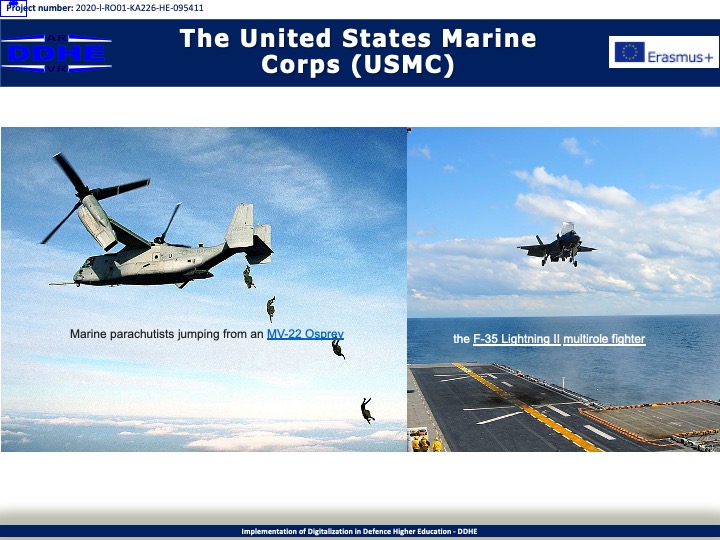The organic aviation capability of the Marine Corps is essential to its amphibious mission. The Corps operates both rotary-wing and fixed-wing aircraft mainly to provide Assault Support and close air support to its ground forces. Other aircraft types are used in a variety of support and special-purpose roles. The light transport and attack capabilities are provided by the Bell UH-1Y Venom and Bell AH-1Z Viper. Medium-lift squadrons utilize the MV-22 Osprey tiltrotor. Heavy-lift squadrons are equipped with the CH-53E Super Stallion helicopter, which are being replaced with the upgraded CH-53K.
Marine attack squadrons fly the AV-8B Harrier II; while the fighter/attack mission is handled by the single-seat and dual-seat versions of the F/A-18 Hornet strike-fighter aircraft. The AV-8B is a V/STOL aircraft that can operate from amphibious assault ships, land air bases and short, expeditionary airfields, while the F/A-18 can only be flown from land or aircraft carriers. Both are slated to be replaced by 340 of the STOVL B version of the F-35 Lightning IIand 80 of the carrier F-35C versions for deployment with Navy carrier air wings.
The Corps operates its own organic aerial refueling assets in the form of the KC-130 Hercules; however it also receives a large amount of support from the U.S. Air Force. The Hercules doubles as a ground refueler and tactical-airlift transport aircraft. The USMC electronic warfare plane, the EA-6B, was retired in 2019. The Marines operate unmanned aerial vehicles: the RQ-7 Shadow and Scan Eagle for tactical reconnaissance.
Marine Fighter Training Squadron 401 (VMFT-401), operates F-5E, F-5F and F-5N Tiger II aircraft in support of air combat adversary (aggressor) training. Marine Helicopter Squadron One (HMX-1) operates the VH-3D Sea King and VH-60N Whitehawk helicopters in the VIP transport role, most notably Marine One, but are due to be replaced. A single Marine Corps C-130 Hercules aircraft, "Fat Albert", is used to support the U.S. Navy's flight demonstration team, the "Blue Angels".
